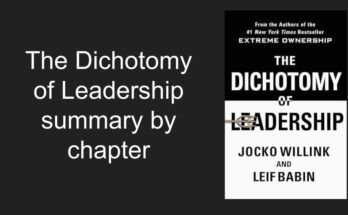In 12 The Elements of great managing summary will include the key ideas of the book, How These 12 Elements affect employee engagement and Productivity.
In 12 The Elements of Great managing summary we will see how authors Rodd Wagner and James Harter explore 12 Gallup questions for employee motivation and challenge conventional ways of motivating employees.
In this book, Authors dig deep into the data collected from millions of employees across the world to find out what affects employee motivation and productivity.
These 12 The Elements of great managing summary are crucial for managing employee motivation, productivity, attrition, profit, attrition rates, customer satisfaction, work absence, and on-the-job accident rates.
What are the key takeaways from 12 The Elements of great managing summary?
- What are the 12 The Elements of Great Managing and questions?
- How do these 12 elements relate to profitability?
- What is the relation between employee engagement and financial success for the organization?
- How to become a great manager?
12 The Elements of great managing summary pdf
You can save download 12 The Elements of great managing summary pdf here
What are the 12 The Elements of Great Managing Questions?
In the 12 The Elements of Great Managing summary, we will now see the Q12, 12 questions Gallup uses to measure the level of employee engagement of any organization.
- I know what is expected of me at work.
- I have the materials and equipment I need to do my work right.
- At work, I have the opportunity to do what I do best every day.
- In the last seven days, I have received recognition or praise for doing good work.
- My supervisor, or someone at work, seems to care about me as a person.
- There is someone at work who encourages my development.
- At work, my opinions seem to count.
- The mission or purpose of my company makes me feel my job is important.
- My associates or fellow employees are committed to doing quality work.
- I have a best friend at work.
- In the last six months, someone at work has talked to me about my progress.
- This last year, I have had opportunities at work to learn and grow.
(Question Source and copyright held by Gallup – These questions are mentioned here only for understanding purposes and should not be used commercially without the consent of Gallup.)
These are powerful questions and employees respond to them in either agreement or disagreement.
Gallup has used these 12 questions to measure employee motivation, engagement, and productivity for millions of employees across the globe.
12 The Elements of Great Managing summary will include all these 12 questions in brief to understand employee engagement and how to become a great manager.
The 1st Element: Knowing what’s expected
The first element of great management is job clarity, your team should have job clarity and should know what is expected from them.
Knowing what’s expected is beyond just the job description, an employee should be able to understand his role, contribution, and the overall impact he makes on the team.

It is like a band of orchestra players, every member has a specific role, and it is clear what to do and when to do their part.
Gallup’s research states that “I know what is expected from me” is the most powerful statement in the survey.
Teams that score high on this item are highly productive, more motivated, and can increase profitability.
No Time for Reading? You can listen to this book for free on Audible, Check it out here.
The 2nd Element: Materials and Equipments
When an employee does not have the materials, equipment, and tools required to perform a job or tools are not sufficient, it creates a great deal of frustration in the team.
Having the right tools can directly impact productivity, profitability, and employee motivation.

When a company provides the right tools to employees, it works as a psychological motivator also, as they feel the company is backing them up.
As per Gallup’s research, Teams that have all the required materials and equipment, tend to perform better, get higher productivity and increase customer satisfaction.
The 3rd Element: The opportunity to do what I do best
Every individual is different from another, two employees working in identical roles will have their own style of delivering results.
For any manager, mapping the right talent to the right job is always a challenge.
Managers can help teams to frame their job roles around their skills and aspirations, and not fix them into specific job descriptions.
Every team member has different skills and talents that can be utilized across the company or the industry.
Giving opportunities to do what they do best, can greatly increase employee satisfaction, increase motivation and productivity.
The 4th Element: Recognition and Praise
We all like being recognized and praised for our best work, the 4th element of great managing is just about that.
Unfortunately, only one in three employees feels that they are recognized by their managers at their workplace.
Recognition can be a differential factory for employee satisfaction and motivation, as per Gallup’s research employees who feel unrecognized are likely to quit the job in a year.
Positive words can help release dopamine (neurotransmitter) in the brain, which creates a feeling of enjoyment and satisfaction.
Dopamine is good for learning and memory with a feeling of satisfaction, so as a great manager use more positive words.
The 5th Element: Someone cares about me as a person
Team cohesiveness is one of the most crucial factors for employee satisfaction and organizational success.
The 5th element of great managing is about social connection, the feeling that someone cares, and a sense of connectedness.
The 5th Element is measured by “My supervisor or someone at work seems to care about me as a person.”
When people form a personal connection they treat each other differently, and they put more effort as a team.

In Gallup’s research absence of the 5th Element can lead to a higher turnaround in the organization, almost 22% higher than those where The 5th element is followed well.
The 6th Element: Someone at work encourages my development.
The relationship between Supervisor and subordinate is somewhat like Master and craftsman, A master always encourages the development of his craftsmen.
The 6th Element is about measuring employee engagement and satisfaction from the perspective of personal development.
An organization where employees feel that there is someone at work who encourages my development has a higher employee engagement ratio than ever.
Supervisors in organizations have to play the role of mentor to their team and take a personal interest in their development.
The 7th Element: My opinions seem to count
The 7th Element is my personal favorite, in the teams where individuals feel that their opinions are counted and implemented, leading to a higher engagement ratio.
However, when team members feel their opinion doesn’t matter to the supervisor are likely to feel dissatisfied at work or stop contributing.
This element of the 12:Element of great managing summary deals with creativity in the team, if an individual feels that their opinions are included for larger goals even if it is half considered, they feel motivated.
Organizations have mechanisms around this and get the best ideas from their team members.
Organizations where employees feel that their opinion matters have a higher rate of ownership, a great sense of belongingness, and higher engagement ratio.
The 8th Element: A connection with the mission of the company.
Employees should feel a connection with the mission of the company, as it is a greater indicator of a sense of belongingness and engagement level.

If employees don’t believe in the mission of the company, they are less likely to get involved in the majority of the tasks.
Most highly motivated and engaged employees put higher efforts into achieving organization’s mission, as they feel it is a worthy goal to achieve.
The 9th Element: Co-workers committed to doing quality work
The 9th Element is about inefficient coworkers who do not give their 100% to the quality of work.
We all have encountered Phonies, cheaters, credit takers, liars, Slackers, Deadwood or many others in our team.
The 9th Element is measured by the statement, “My associates or fellow employees are committed to doing quality work,”.
In Gallup’s research, we can see the frustration of employees by these statements.
- No one wants to take responsibility for anything.
- I hate to tell everyone what to do every time.
- It has become my job to correct their mistakes and negligence every time.
Scores of The 9th Element show that a team who feels committed to giving quality work has fewer conflicts, better with customers, fewer accidents, and more productivity.
The 10th Element: A best friend at work
The 10th element is measured with the statement, “I have a best friend at work”.
This element is about having personal affiliation in the team or the organization, this sense of affiliation drives performance and improves the quality of relationships.
Friendship and performance are salient parts of the 10th element that drives the numbers like the quality of work, profits, less turnaround, and many more.
Research has shown that it is easier to work with friends, they share information freely, can be open for feedback, and increase the acceptance rate within the team.
The 11th Element: Talking about progress
Organizations where leaders regularly check with team members about their progress have high employee engagement levels.
The 11th Element is measured by the statement, In the last six months, someone at work has talked to me about my progress.
This discussion can be formal or informal but must happen regularly, as it motivates employees.
Employees feel compensated when the manager checks on their progress regularly and provides candid feedback for growth.
The 12th Element: Opportunities to learn and grow
Employees stay longer with the organization where they find opportunities to learn and grow.
The 12th Element is measured by the statement,” This last year, I have had opportunities at work to learn and grow.”
The 12th element has a direct linkage to employee turnaround, employee satisfaction, and profitability.
These 12 elements are crucial for the level of employee engagement and employee satisfaction at work.
12:The Elements of great managing summary tried to include all the key ideas of the book.
No Time for Reading? You can listen to this book for free on Audible, Check it out here.
You can check out other book summaries.


